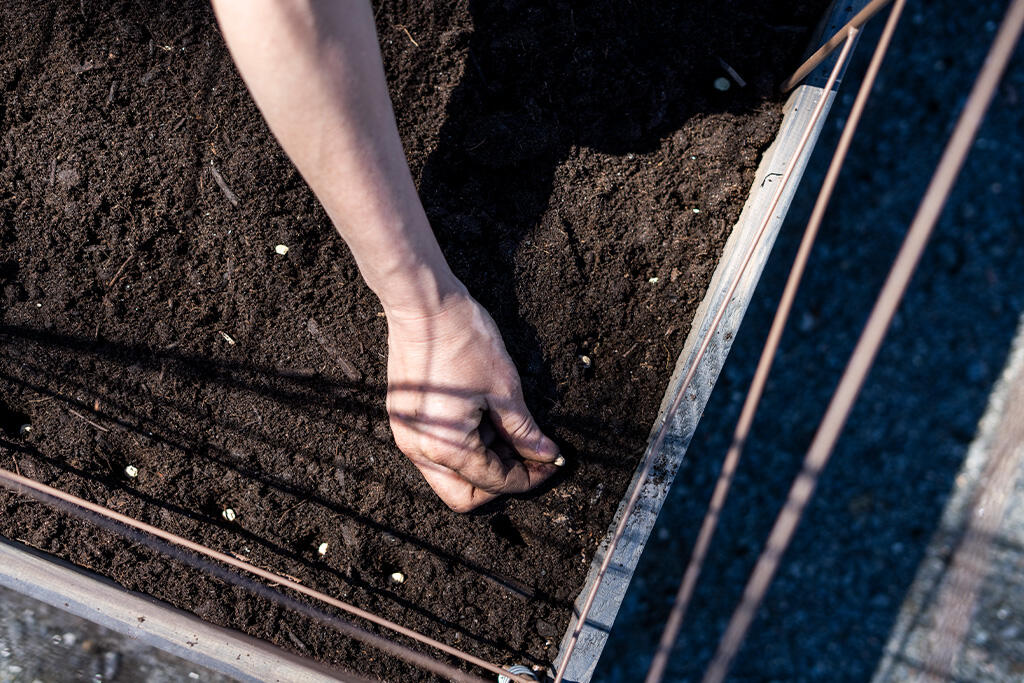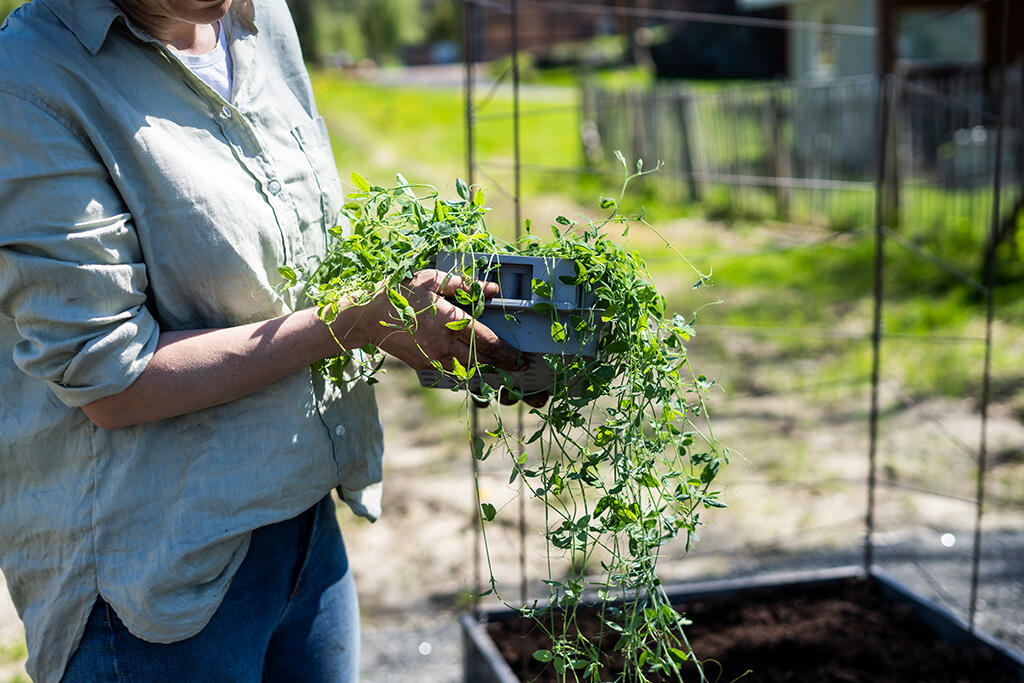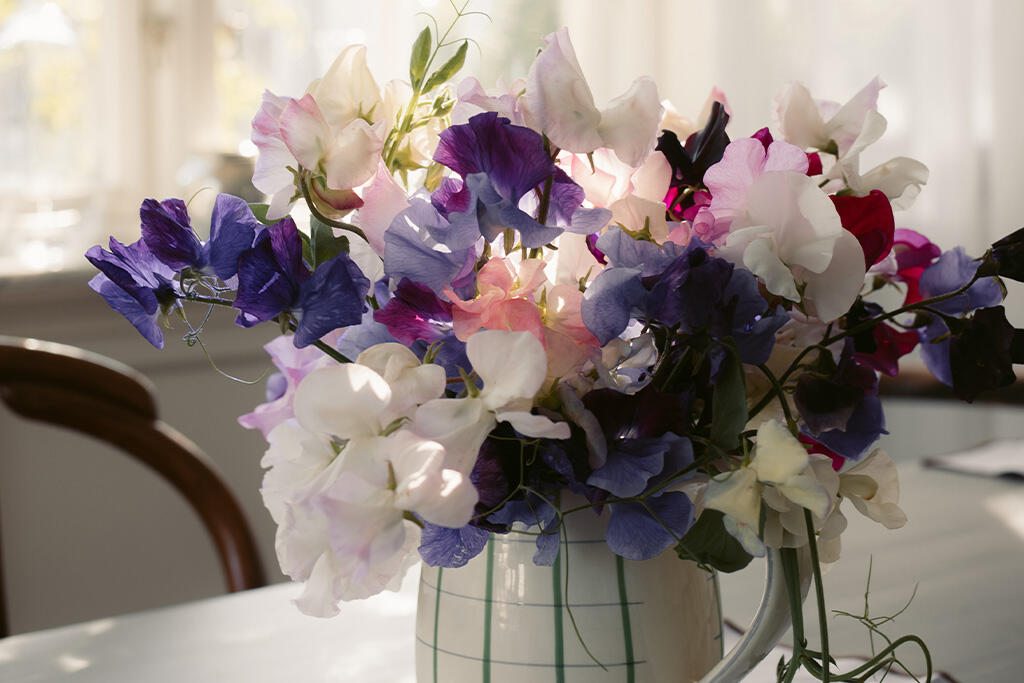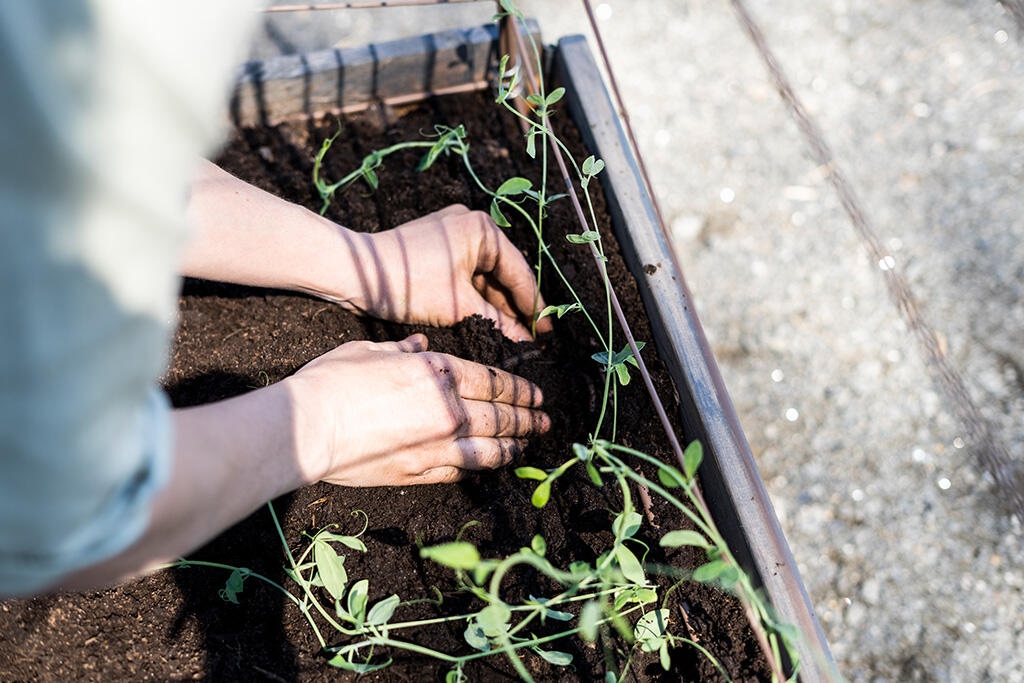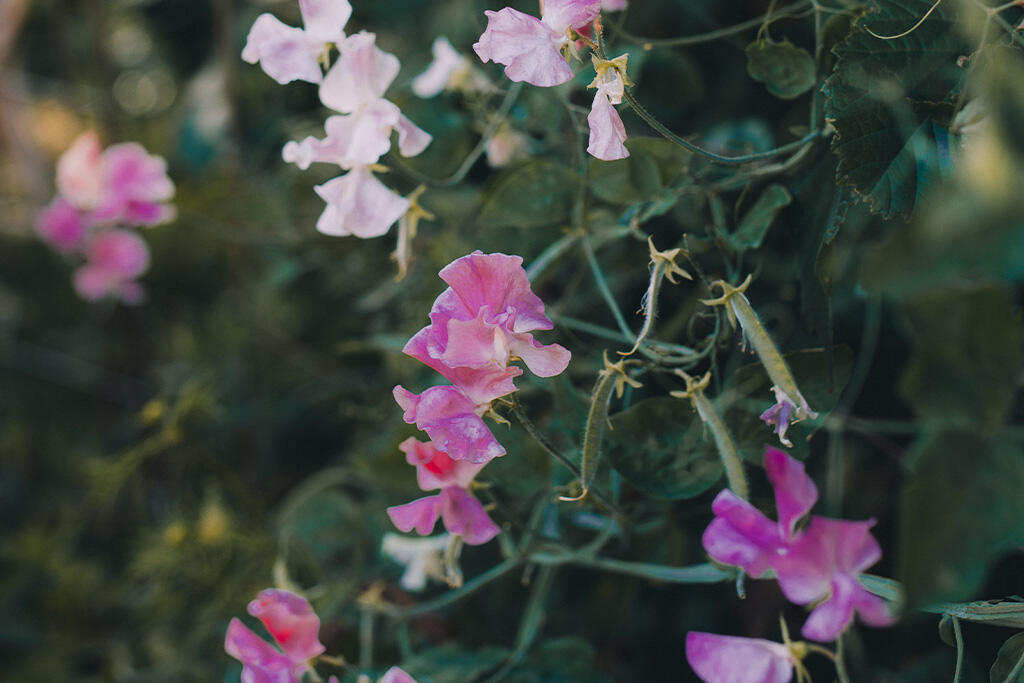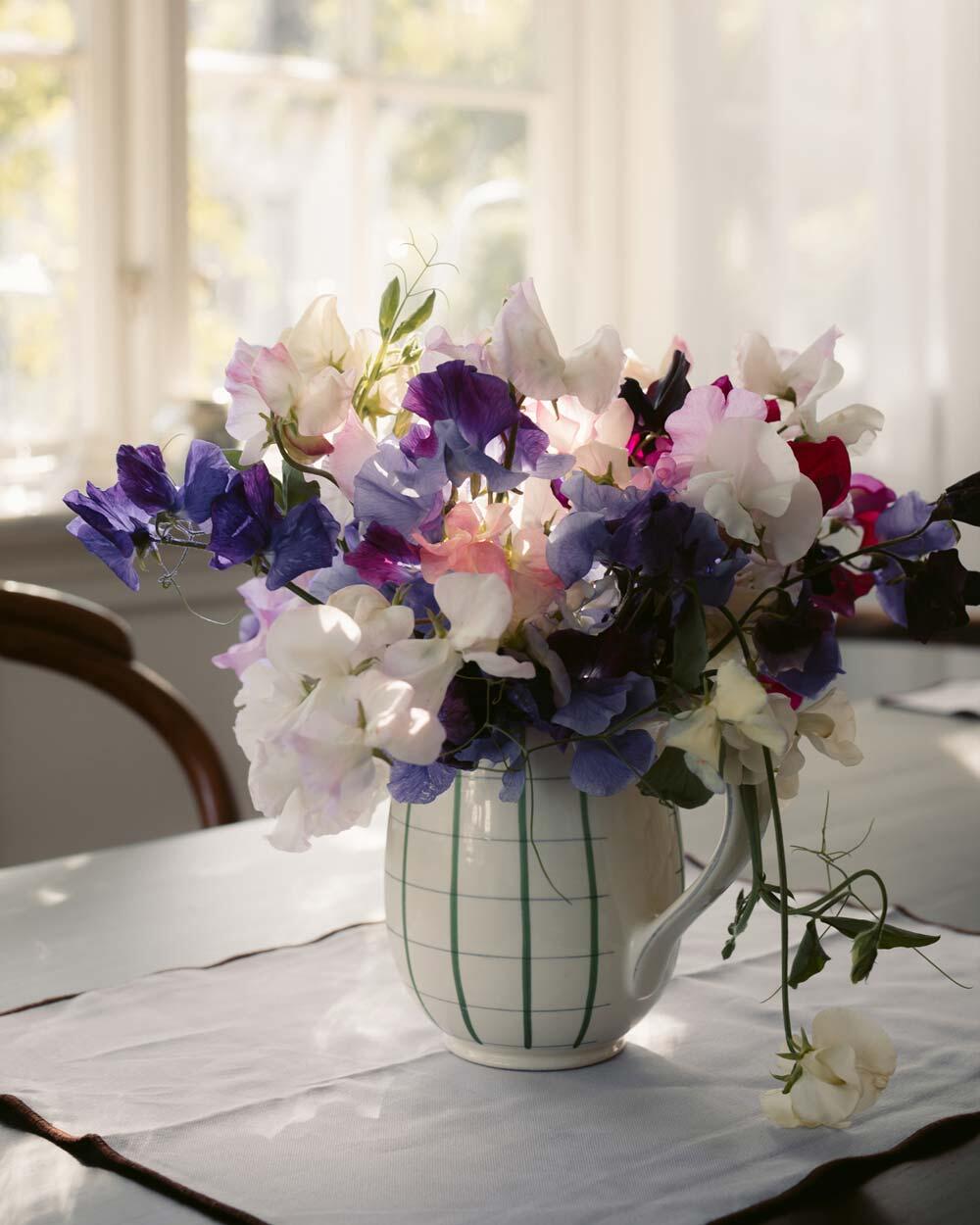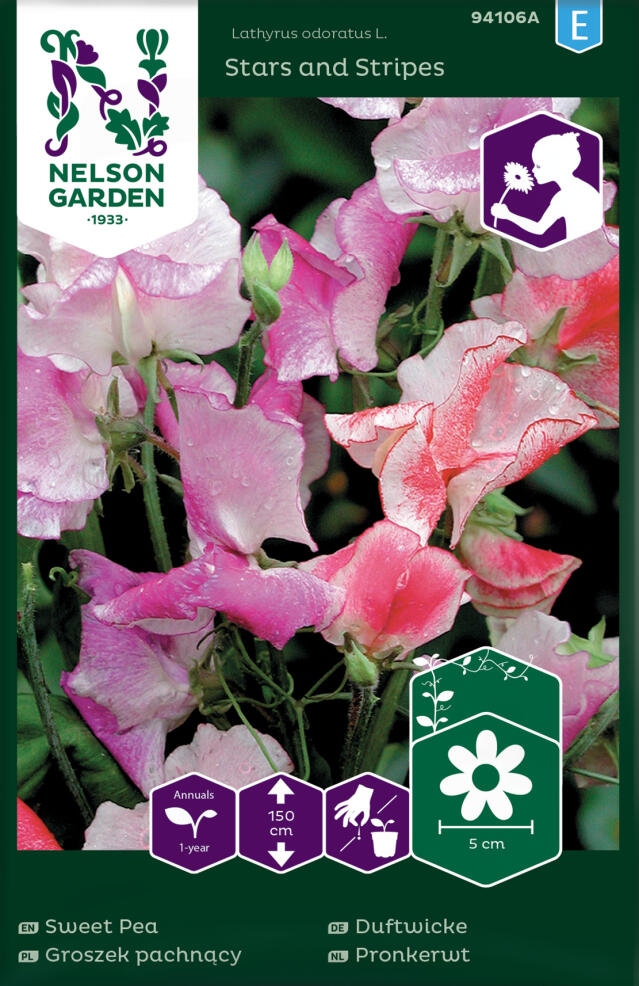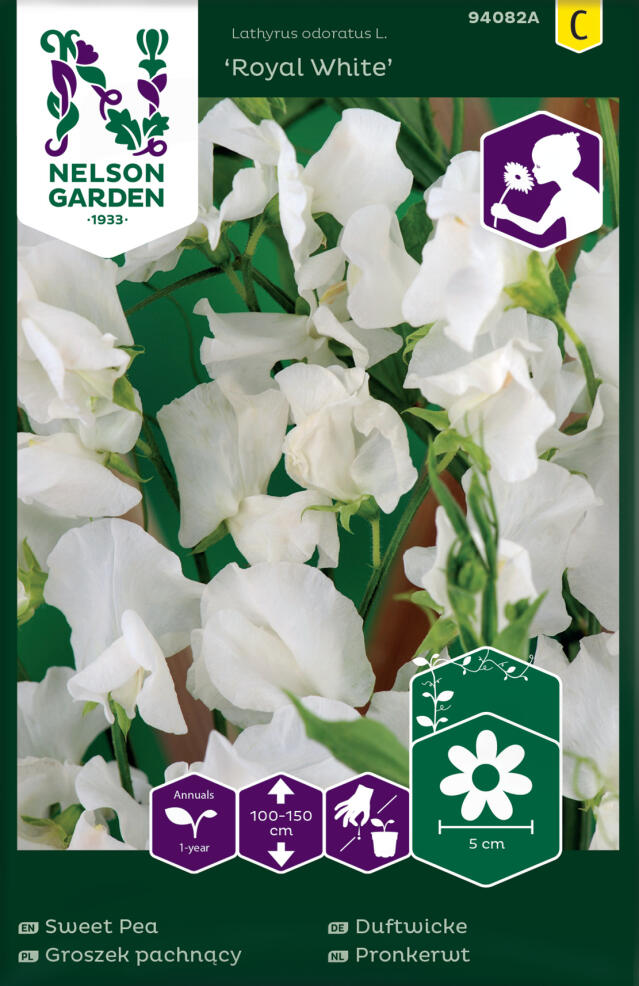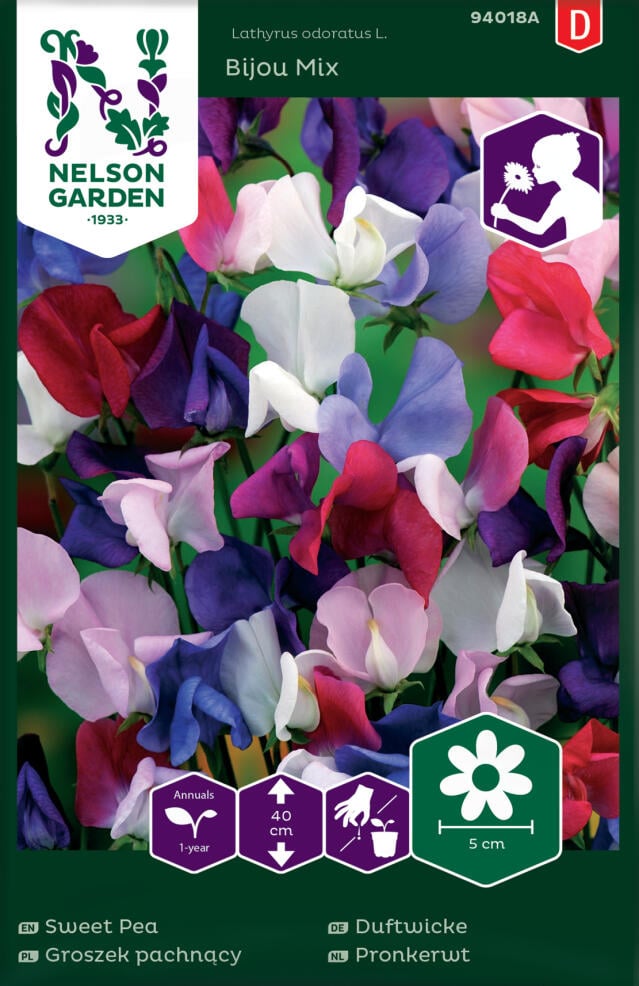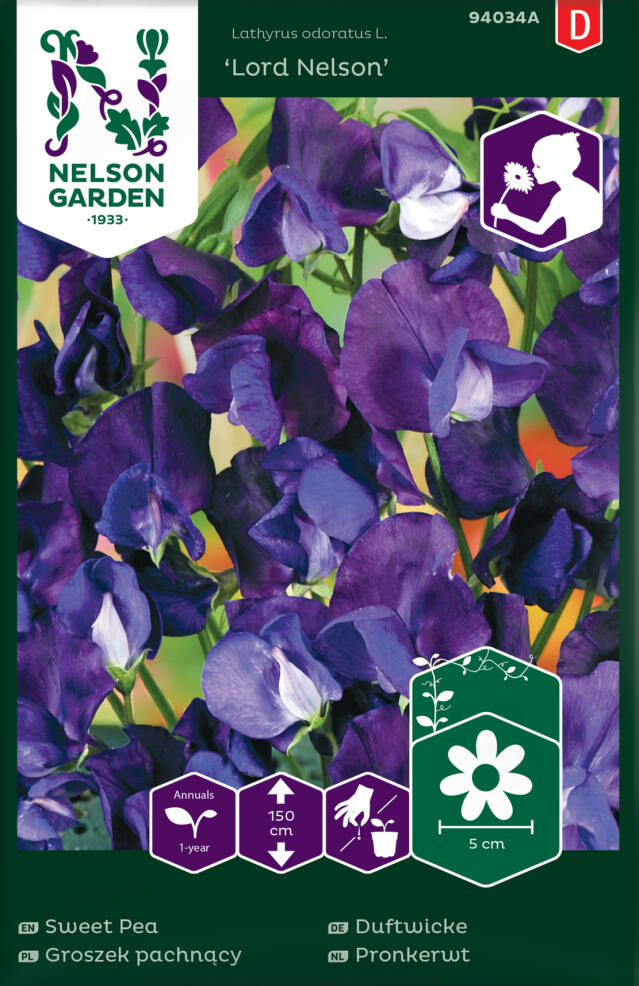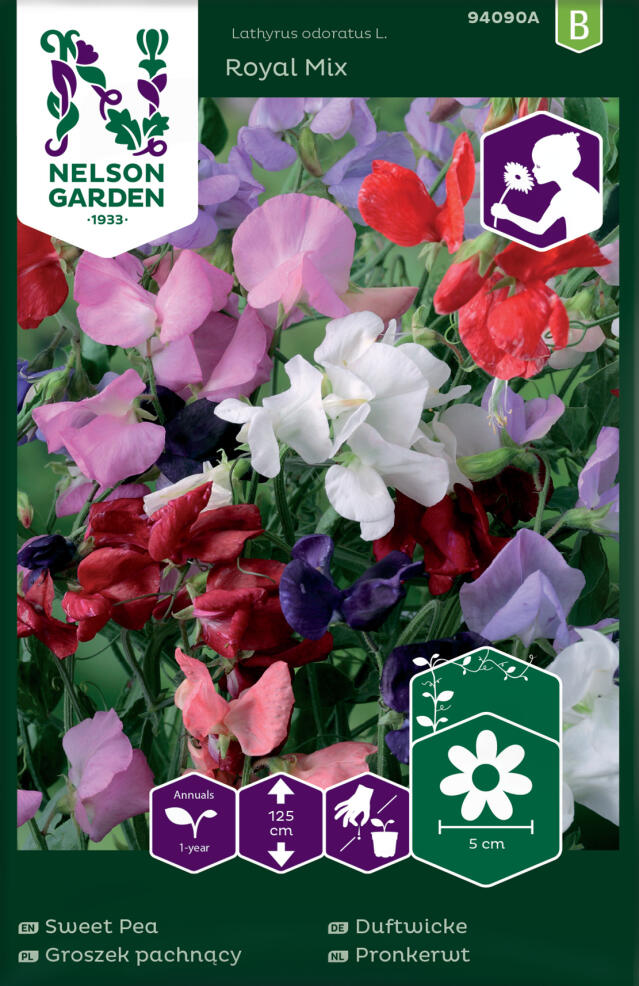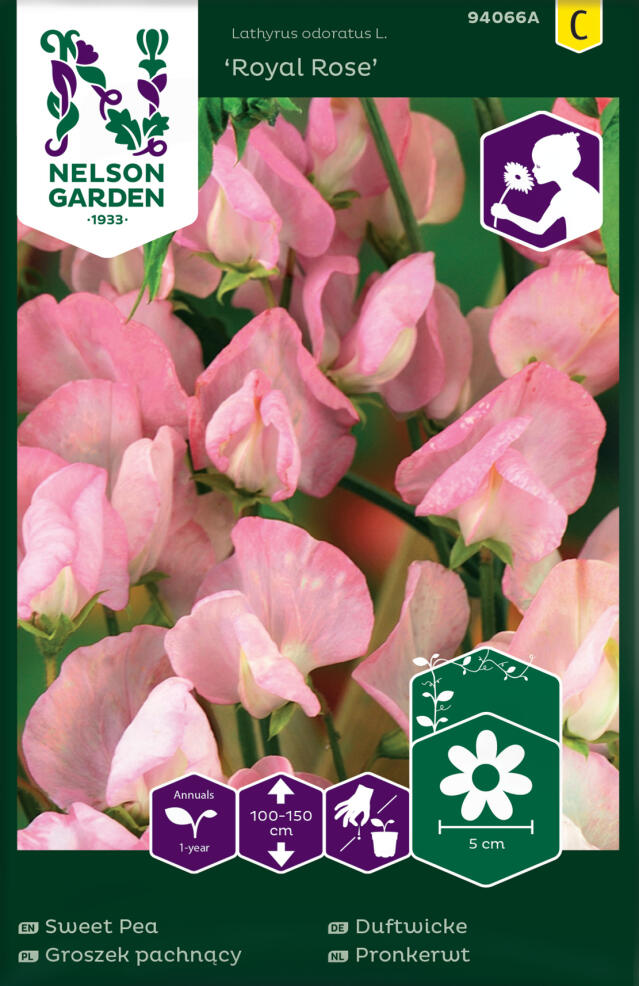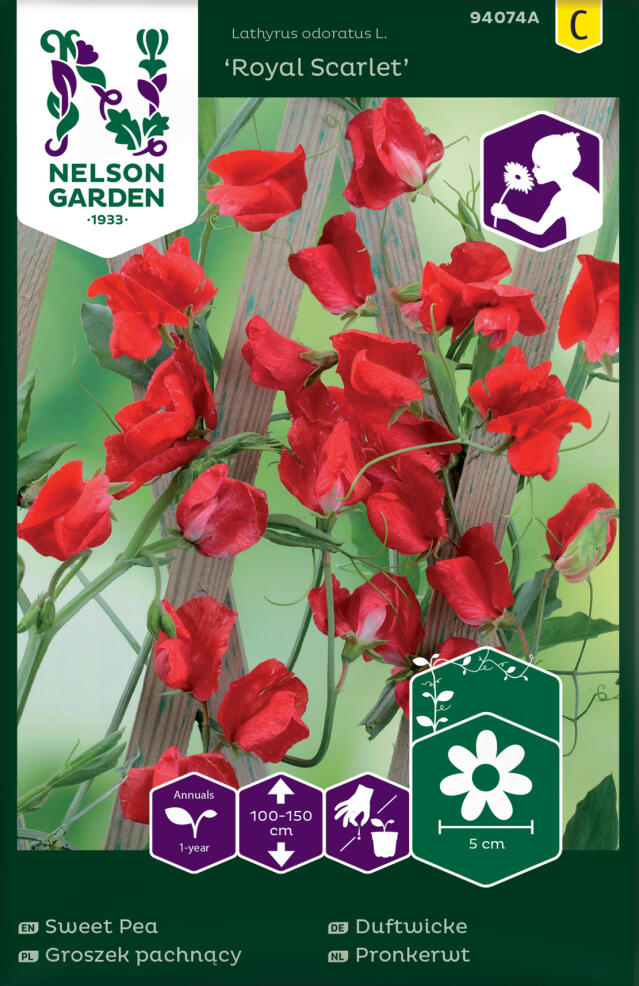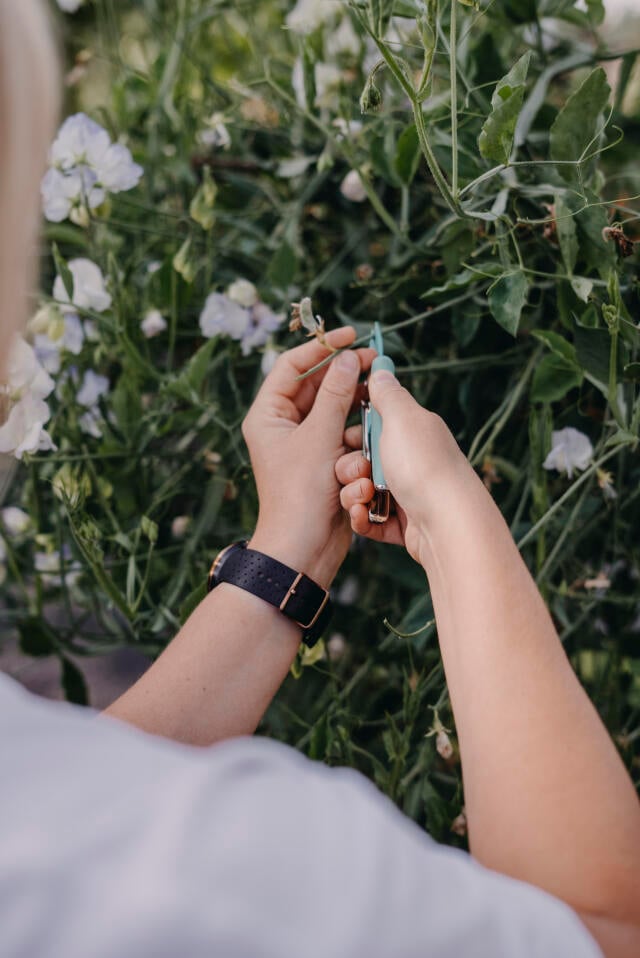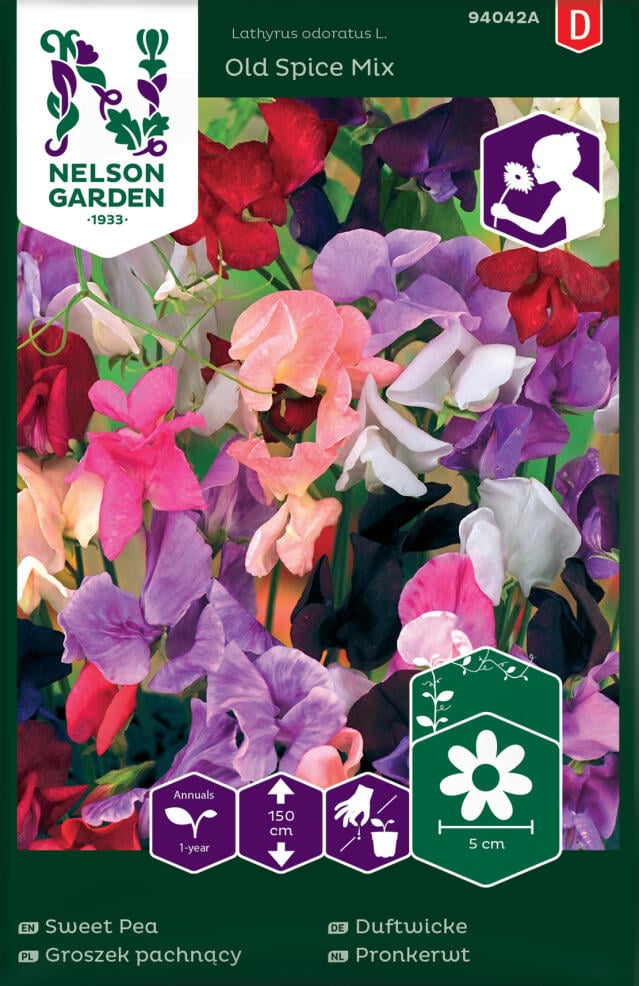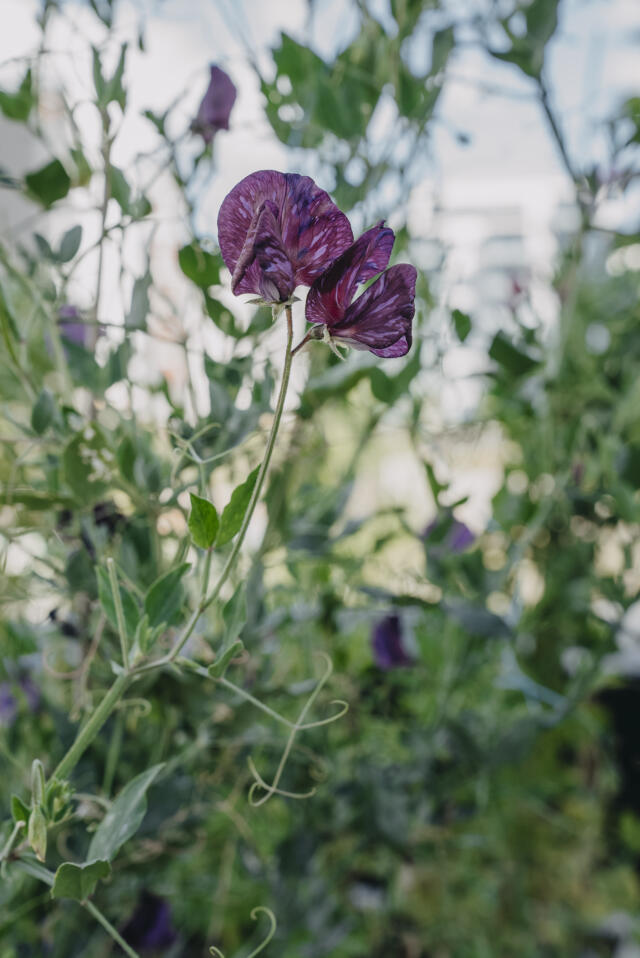Growing sweet peas
22 June 2022For many people, the fragrance of sweet peas epitomises summer, and given a little TLC, the fabulous Lathyrus odoratus is a plant that will continue to bloom until first frost. If you’re looking for early, rich flowering, you should start initial preparation and care in good time.
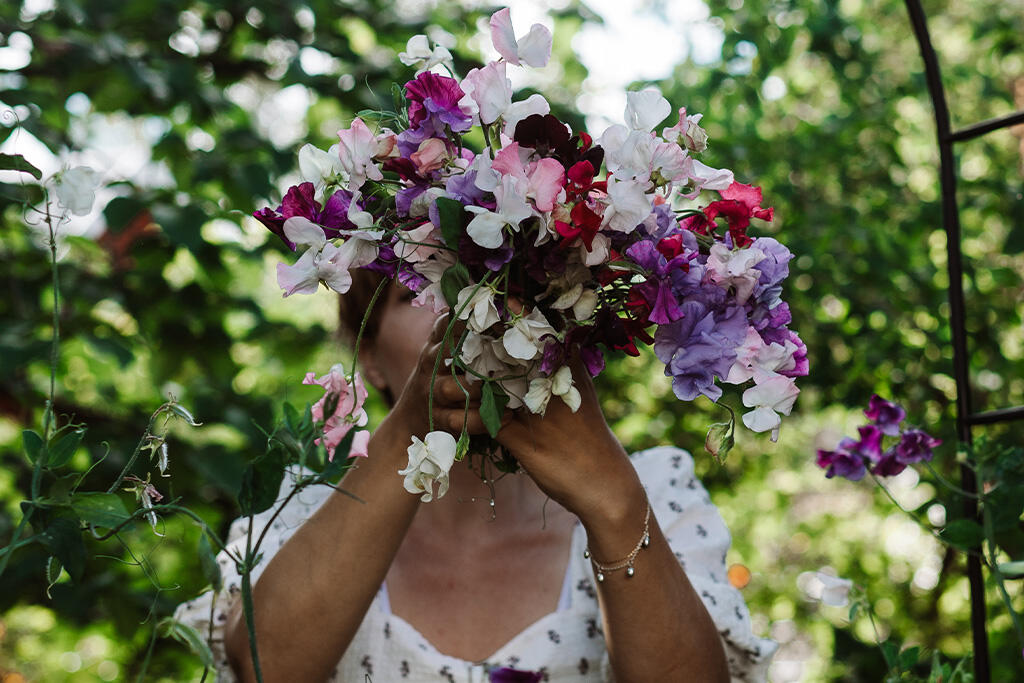
Like many other summer flowers, the sweet pea benefits from good initial preparation. This means sowing in pots indoors to give them a good head start before planting them in their outdoor home. Since we have major variations in climate in our country, the time for planting outdoors can vary. Count on 4–6 weeks of initial preparation. If you don’t have time for pre-cultivation or simply forgot to sow them early, sowing them directly outdoors once the risk of frost has passed is not a problem. Direct planting means slightly later flowering, but stronger plants that have lived all their lives outdoors.
How to sow sweet peas
Ideally, soak sweet pea seeds before sowing. This will awaken the dry seeds and trigger the germination process. Remember to sow in low-nutrient soil, such as potting soil. Most seeds have all the nutrients they need to get started, and potting soil is gentle on the tender roots of a new plant. Since sweet peas grow deep roots, they should be disturbed as little as possible when planting outdoors. Thus they will benefit from being sown individually in plug trays. If you scatter the seeds, it always involves a little ripping and tearing when separating the plants.
Let the sweet peas germinate in a cool place
Sweet peas germinate best in cooler surroundings. Moisture is important for the germination process and the soil should be kept evenly moist. As soon as the shoots appear, they should be placed somewhere sheltered but cool. As soon as they have germinated, they can actually cope with temperatures down to 0 degrees. Low temperatures make it easier to get sturdy, compact plants. Because the balance between light and temperature is crucial for compact growth, it can be beneficial to use a supplementary grow light. As a rule of thumb, high temperatures require more light, while lower temperatures demand less.
How to make sweet pea cuttings
Once they begin growing, the plants spread out fast and often present a challenge in a window with limited space. Fortunately, you can prune the plants, which has additional advantages. Prune above the second or third leaves, and the plant will produce more shoots from the bottom, making your sweet pea plants denser. This is known as topping and can be done to make most plants denser and bushy. The pruned top is a perfect cutting and can be put in a glass of water where it will usually develop roots quite quickly. And Bob’s your uncle, you’ll have twice as many plants!
After initial preparation, you’ll have a whole bunch of plants ready for a summer outdoors. Remember not to put them outdoors before they’ve had a little gradual acclimatisation. All plants grown indoors should be toughened up before putting them out. They need to get used to the sun, wind and weather. The entire process can take around a week. Once the sweet peas are acclimatised, they like lots of sun and nutrient-rich soil to thrive. In shady locations, the plants will be frail with sparse flowers.
Growing sweet peas
Sweet peas can be grown almost anywhere, be it a large garden or a balcony in the city. Planting in pots with quality, nutritious soil will provide flowers for a long time. In the same way, sweet peas can be planted directly in a flower bed or pallet collars. If you fill a pallet collar with sweet peas, you’ll have plenty of flowers for bouquets almost all summer long. Plant the sweet peas about 5 cm apart as the roots go deep in their search for nutrients and moisture. After planting, be sure to water well for the first few days as spring and early summer can often be a little dry.
How to support sweet peas
After planting outdoors, you will need to support them with a trellis and lines. As climbing plants, sweet peas do most of the work themselves, but they need something to hold on to. They hold on using tendrils at the extremities of the leaves. Using sturdy bamboo canes and jute twine, it’s easy to make a teepee trellis by tying twine lines around the canes about 15 cm apart. A teepee is a smart idea if you plant in pots or to serve as an upright in a flower bed. If you plant rows in flowerbeds or in a pallet collar, a row of bamboo canes with jute twine in between is a good solution. No matter what type of trellis you choose, count on a height of around 2 metres. Using jute twine makes cutting down old plants and twine super easy, and you can compost it all at the end of the season.
Fertilising sweet peas
Once your flower bed gets established you will see stronger growth and new shoots, and this is the time to fertilise. Because they are growing profusely and producing enormous numbers of flowers, your sweet peas will need lots of energy. So it’s important to make sure the plants have good, constant supply of the necessary nutrients to maximise blooming and growth.
Prune the peas often
As a rule, the first flowers appear in the middle of the summer, and then it’s time to get out the scissors. Sweet peas should be cut often to encourage the plant to produce more flowers, and by cutting flowers that have blossomed we stimulate the plant to produce new buds, significantly increasing the flowering period. There’s almost nothing better than burying your face in a fresh bunch of sweet peas, and a handful of plants will fill your vases for most of the summer.
Good to know about sweet pea bouquets
When you pick flowers for your vases, there are a few things to consider. Cut flowers early in the morning when the plant is full of sap after a cool night. Then put them in water as soon as possible, within about the time you’re able to hold your breath. Alternatively, make a new cut with a sharp knife or secateurs just before you put them in a vase. Always make sure the vase is perfectly clean and ideally use a cut-flower nutrient for longer bouquet life. Our final tip is to place the bouquet somewhere cool at night or when you’re not at home.
How to harvest sweet peas seeds
If you have any favourite sweet pea flowers, you can harvest your own seeds. You can do this toward the end of the season. Just remember to allow enough time for the seeds to mature before the first frost. Let the flowers stay on the plant, and the seed pods will develop after flowering. If you have several different plants together, it’s a good idea to label the plants you collect seeds from. Then make a note of this to plan next year’s colours in the flower bed. Once the seeds have matured, store them in a cool, dry place.
Perennial sweet pea alternatives
Fragrant sweet peas, Lathyrus odoratus, are annuals, and will die with the first frosty autumn nights. If you’re looking for a sweet pea that will last year after year, then there is an alternative in the perennial Everlasting Pea, aka Lathyrus latifolius. It’s just as beautiful as the annual sweet pea, but lacks its fragrance. Everlasting Peas can cope with H7 hardiness conditions and grow up to 3 metres! Expect to enjoy a fantastic sight from around midsummer and far into late summer.
